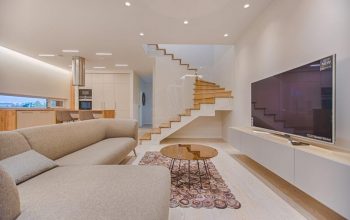Vehicle window tints are increasingly popular, offering aesthetic and practical advantages․ They enhance privacy, reduce glare, and filter harmful UV rays․ Understanding the pros and cons is crucial before deciding to tint your windows, ensuring informed decisions based on individual needs․

Benefits of Window Tinting
Window tinting offers a multitude of advantages beyond aesthetics․ These include UV protection, heat reduction, increased privacy, and glare reduction․ Tinted windows also contribute to interior protection, preventing fading and damage from the sun, thus enhancing the vehicle’s overall comfort and value․
UV Protection
One of the primary benefits of window tinting is its ability to block harmful ultraviolet (UV) rays from the sun․ Prolonged exposure to UV radiation can lead to skin damage, premature aging, and an increased risk of skin cancer․ Window tints act as a shield, filtering out a significant percentage of these harmful rays, often blocking up to 99% of UV radiation․
This protection extends beyond just the occupants of the vehicle․ UV rays can also damage the interior of your car, causing fading, cracking, and discoloration of upholstery, dashboards, and other surfaces․ By blocking UV rays, window tinting helps to preserve the interior of your vehicle, keeping it looking newer for longer․
Furthermore, UV protection offered by window tints contributes to a more comfortable driving experience․ By reducing the amount of heat and glare entering the car, tinted windows can help to alleviate eye strain and fatigue, making long drives more pleasant and safer․ This comprehensive UV protection makes window tinting a valuable investment for both your health and your vehicle’s longevity․
Heat Reduction
Window tinting significantly contributes to heat reduction within vehicles and buildings․ By blocking a substantial amount of solar heat, tinted windows help maintain a cooler interior temperature, particularly during hot summer months․ This reduction in heat minimizes the need for excessive air conditioning, leading to potential energy savings and reduced fuel consumption in vehicles․
The heat-reducing properties of window tint also enhance comfort for occupants․ A cooler interior makes for a more pleasant driving or living experience, preventing discomfort caused by excessive heat buildup․ Furthermore, reduced heat exposure can protect sensitive electronic devices and other items inside the vehicle or building from overheating and potential damage․
Moreover, certain types of window tints are specifically designed with advanced heat-rejection technology․ These high-performance films can block a significant portion of infrared radiation, which is a major contributor to heat buildup․ By investing in quality window tinting with excellent heat-reduction capabilities, individuals can enjoy a more comfortable and energy-efficient environment․
Increased Privacy and Security
Window tinting provides an added layer of privacy by making it more difficult for outsiders to see into your vehicle or building․ This can be particularly beneficial for individuals who value their personal space or who wish to protect their belongings from prying eyes․ The level of privacy achieved depends on the darkness of the tint chosen, allowing for customization based on individual preferences․
In addition to privacy, window tint can also enhance security․ By obscuring the view into the vehicle or building, it can deter potential thieves from targeting it․ Criminals are less likely to break into a vehicle or building if they cannot see what valuables might be inside․ Furthermore, some security films are designed to be shatter-resistant, making it more difficult for intruders to break through the glass․
This added layer of protection can provide peace of mind, especially in areas with high crime rates․ While window tinting is not a foolproof security measure, it can serve as an effective deterrent and make it more challenging for criminals to gain access․
Glare Reduction
Glare reduction is a significant benefit of window tinting, enhancing visibility and safety, especially while driving․ Sunlight reflecting off surfaces like roads, other vehicles, and buildings can create intense glare, causing eye strain and making it difficult to see clearly․ Window tint effectively minimizes this glare, providing a more comfortable and safer driving experience․
By reducing glare, window tint can help prevent accidents caused by impaired vision․ It allows drivers to see the road and other vehicles more clearly, even in bright sunlight․ This is particularly important during sunrise and sunset when the sun is low on the horizon and glare is at its worst․ Moreover, reduced glare also decreases eye fatigue, making long drives less tiring․
Furthermore, glare reduction isn’t limited to vehicles; it’s also beneficial in homes and offices․ Window tint can minimize glare on computer screens and other reflective surfaces, improving productivity and reducing eye strain․ This creates a more comfortable and efficient environment for work and leisure․
Interior Protection
Window tinting offers excellent interior protection for vehicles, homes, and offices․ The sun’s harmful ultraviolet (UV) rays can cause significant damage to interior surfaces, leading to fading, cracking, and discoloration of upholstery, dashboards, and other materials․ Window tint acts as a barrier, blocking up to 99% of these harmful UV rays, thus preserving the appearance and extending the lifespan of your interiors․
In vehicles, window tint can protect leather seats from cracking, prevent dashboards from fading, and keep upholstery looking new for longer․ This is particularly beneficial for vehicles parked outdoors for extended periods․ Similarly, in homes and offices, window tint safeguards furniture, carpets, and artwork from sun damage, maintaining their value and aesthetic appeal․
Moreover, interior protection extends beyond just aesthetics․ By reducing heat buildup caused by solar radiation, window tint can also prevent warping and other structural damage to interior components․ This helps to maintain the integrity of your vehicle’s or building’s interior, reducing the need for costly repairs and replacements over time․
Types of Window Tints
Various window tint types exist, each with distinct characteristics․ Options include dyed, metalized, ceramic, and carbon films․ Each provides different levels of UV protection, heat reduction, and aesthetic appeal․ Selecting the right tint depends on individual needs and preferences․
Dyed Tints
Dyed window tints are among the most economical options available for darkening windows․ They achieve their tint through multiple layers of dye applied to a film․ This type primarily focuses on aesthetics, offering a darkened appearance without significant heat rejection or UV protection capabilities․ Dyed tints are effective at reducing glare and increasing privacy, making them a popular choice for those on a budget․
However, dyed tints have limitations․ Over time, the dye can fade, leading to discoloration and reduced effectiveness․ They also offer minimal heat rejection, which can be a drawback in warmer climates․ While they block some UV rays, their protection is less comprehensive compared to other tint types․ Despite these limitations, dyed tints remain a viable option for those seeking basic window darkening at a lower cost․
Proper installation and care can extend the lifespan of dyed tints․ Regular cleaning with non-abrasive products helps maintain their appearance․ It’s important to consider the trade-offs between cost and performance when choosing dyed tints․

Potential Drawbacks of Window Tinting
While window tinting offers benefits, drawbacks exist․ These include cost considerations, where high-end films can be expensive․ Visibility issues, especially at night, and legal restrictions are other factors․ Maintenance and durability issues should also be considered before installation․
Cost Considerations
The cost of window tinting is a significant factor for many․ Depending on the film type and quality, prices can vary widely․ High-end films, offering superior UV protection and heat rejection, often come with a higher price tag, influencing overall project expense․ Budgeting is essential․
Professional installation adds to the cost․ While DIY kits exist, professional application ensures a smooth, bubble-free finish, minimizing the risk of costly errors․ Choosing a reputable installer with experience is crucial for achieving optimal results and longevity․
Long-term savings should be considered․ While the initial investment may seem high, reduced energy consumption can lead to lower utility bills over time․ This makes it crucial to evaluate the upfront costs alongside potential long-term savings․
Consider material quality and warranty when evaluating costs․ Cheaper films might not last as long or offer the same level of protection, leading to premature replacement costs․ A comprehensive warranty can provide peace of mind and protect your investment․
Visibility Issues
One potential drawback of window tinting is reduced visibility, particularly at night or in low-light conditions․ Darker tints can significantly impede the driver’s ability to see clearly, posing safety risks․ Balancing privacy and visibility is crucial when selecting tint darkness levels․
Choosing an appropriate tint darkness is essential for maintaining safe driving conditions․ It’s important to adhere to legal tint restrictions in your area, which are designed to ensure adequate visibility․ Overly dark tints can result in fines and legal complications․
Older drivers or those with impaired vision may experience greater difficulty with tinted windows․ Considering individual visual acuity is important before making a decision․ Clearer films offering UV protection without significantly impacting visibility may be a suitable alternative․
Proper installation is crucial to minimize distortion and maintain optimal visibility․ Bubbles, creases, or imperfections in the film can further impair vision․ Professional installation ensures a smooth, clear finish, reducing the risk of visibility issues and enhancing safety․

Legal Aspects of Window Tinting
Window tinting regulations vary significantly by state and local jurisdiction․ It’s crucial to understand and comply with the legal limitations on tint darkness, measured as Visible Light Transmission (VLT)․ VLT refers to the percentage of light that can pass through the tinted window․
Many regions have specific VLT requirements for different windows on a vehicle, such as the windshield, front side windows, and rear windows․ Some areas may prohibit tinting on the windshield below a certain AS1 line․ Failure to comply with these regulations can result in fines, citations, and the requirement to remove the tint․
Medical exemptions may be available for individuals with certain medical conditions that make them particularly sensitive to sunlight․ These exemptions typically require documentation from a qualified healthcare professional․ It’s essential to research and understand the specific laws in your area before applying any window tint․
Professional window tint installers are generally knowledgeable about local regulations and can advise on compliant tint options․ Always verify the installer’s understanding of the legal requirements before proceeding with the installation․ Staying informed about the legal aspects ensures compliance and avoids potential legal repercussions․

DIY vs․ Professional Installation
When considering window tinting, a key decision is whether to undertake a DIY installation or opt for professional services․ DIY kits offer a cost-effective initial option, but require precision and patience․ Achieving a flawless, bubble-free finish can be challenging without experience, potentially leading to imperfections and reduced longevity․
Professional installation, while more expensive upfront, offers several advantages․ Professionals possess the expertise, specialized tools, and controlled environments necessary for optimal results․ They ensure precise cutting, seamless application, and proper heat shrinking for curved windows, minimizing the risk of errors․
Furthermore, professional installers typically provide warranties on their work, covering defects in materials or workmanship․ This offers peace of mind and protects against potential issues down the line․ DIY installations lack such guarantees, leaving you responsible for any repairs or replacements․
While DIY can be a viable option for those with experience and a meticulous approach, professional installation is generally recommended for achieving the best possible outcome, ensuring long-lasting, aesthetically pleasing, and legally compliant window tint․



